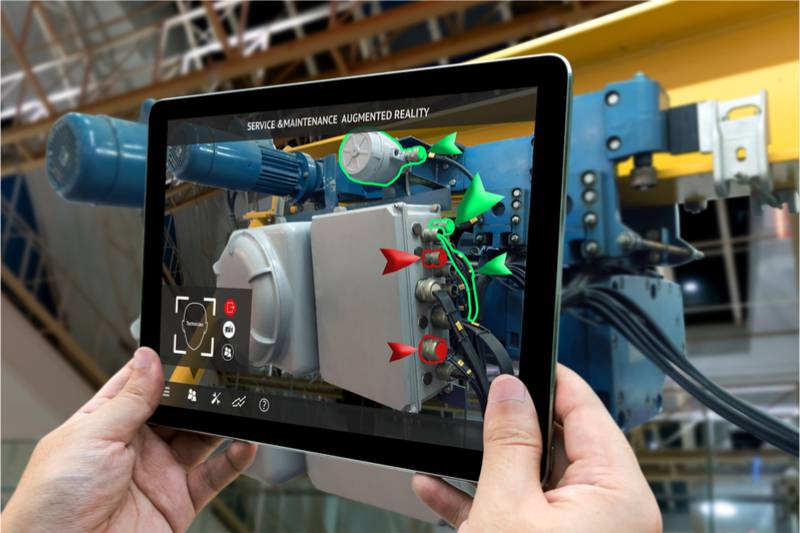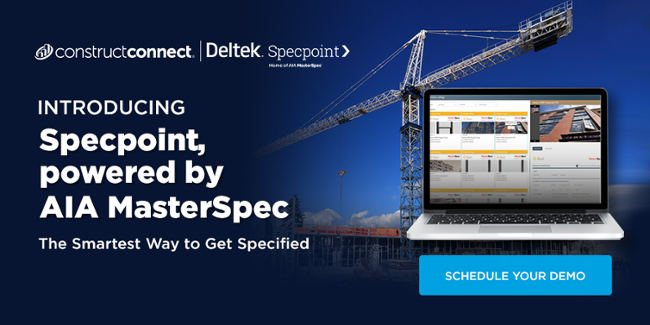By: Kendall Jones on August 27, 2021
How Building Product Manufacturers Can Benefit From Augmented Reality
Building product manufacturers are no strangers to technology. Manufacturing robots, IoT, automation, Industry 4.0, and integrated digital supply chains are just of few of the tools employed by manufacturers to improve efficiency, boost productivity and ensure the quality of their products. Over the past couple of years, an unexpected technology has started to make its way onto factory floors: augmented reality.
Augmented reality is technology where real-world environments are enhanced, or augmented, by superimposing virtual computer-generated images or holograms onto a physical space using special headsets, tablets, or smartphones. Hands-free use can be accomplished with peripherals, such as Microsoft’s HoloLens, providing a heads-up display and allowing workers to continue working while accessing information.
Here are a few of the ways that building product manufacturers could benefit from the use of augmented reality:
Manufacturing & Assembly
Manufacturing and assembly of complex building products could benefit from workers being equipped with augmented reality glasses. Step-by-step assembly and work instructions could be displayed in front of the worker, eliminating the need to constantly consult a laptop or instruction manual. Hands-free headsets and voice-activated controls allow the worker to be more productive by being able to call up diagrams and assembly videos while they continue to work.
Augmented reality could also be used as a means of quality control. Snapping a photo of the completed product and comparing it to technical drawings to ensure that it was assembled correctly or that the measurements are within specified parameters. Augmented reality could also be used to verify that a worker has all the materials and tools needed to complete a task.
Training
Augmented reality can be a valuable training tool for new employees or to teach new skills to existing workers. Augmented reality can walk workers through each step providing visual cues as they learn to operate machinery or assemble products. Video cameras on the headsets allow a trainer to monitor their work and provide guidance along the way. Captured video can later be reviewed with the work to point out mistakes and identify areas for improvement.
Manufacturing Equipment Maintenance
Similar to both assembly and training, maintaining and servicing manufacturing equipment could be guided by augmented reality. A worker equipped with an augmented reality headset could quickly check the status of a machine, run diagnostics on manufacturing equipment, or identify worn or broken parts.
They can then pull up the maintenance manual that takes them through the steps to replace parts and make repairs to equipment. Augmented reality can be used to verify the repairs and replacement parts have been installed correctly before bringing the equipment back online.
The same type of system could also be deployed in the field to service equipment such as HVAC systems, elevators, or building control systems. Technicians could quickly identify the issue, get detailed instruction on making the repair verify their work against service manuals they pull up on their augmented reality headsets. The technology can also be used to review past service records, share their view and consult with experts, and order replacement parts from the field.
Sales
Augmented reality has the potential to be a valuable selling tool for building product manufacturers. Instead of carrying around samples or product brochures, augmented reality allows products to be displayed in real-world environments. Different finishes or products could be displayed side by side so customers can make more informed decisions.
Allowing architects to experience the look and feel of your products in real-world settings with augmented reality solutions will aid manufacturers in getting the products specified for construction projects. Augmented reality will create a whole new way to showcase and display their products in a more tangible way.
Augmented reality has the potential to have a positive impact on the building product manufacturer sector in a number of ways that will improve efficiencies and boost productivity. From product design to sales, augmented reality will have a positive impact on product manufacturing in the future.
About Kendall Jones
Kendall Jones is the Editor in Chief at ConstructConnect. He has been writing about the construction industry for years, covering a wide range of topics from safety and technology to industry news and operating insights.

 Sign In
Sign In




